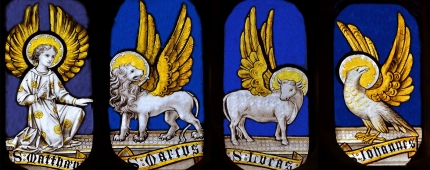Genesis 1:27—Were Adam and Eve real people or just myths?
Problem: Many modern scholars consider the first chapters of Genesis to be myth, not history. But the Bible seems to present Adam and Eve as literal people, who had real children from whom the rest of the human race came (cf. Gen. 5:1ff).
Solution: There is good evidence to believe that Adam and Eve were real persons. First, Genesis 1–2 presents them as actual persons and even narrates the important events in their lives (=history). Second, they gave birth to literal children who did the same (Gen. 4:1, 25; 5:1ff). Third, the same phrase (“this is the history of”), used to record later history in Genesis (6:9; 9:12; 10:1, 32; 11:10, 27; 17:7, 9), is used of Adam and Eve (Gen. 5:1). Fourth, later OT chronologies place Adam at the top of the list (1 Chron. 1:1). Fifth, the NT places Adam at the beginning of Jesus’ literal ancestors (Luke 3:38). Sixth, Jesus referred to Adam and Eve as the first literal “male and female,” making their physical union the basis of marriage (Matt. 19:4). Seventh, Romans declares that literal death was brought into the world by a literal “Adam” (Rom. 5:14). Eighth, the comparison of Adam (the “first Adam”) with Christ (the “last Adam”) in 1 Corinthians 15:45 manifests that Adam was understood as a literal, historical person. Ninth, Paul’s declaration that “Adam was formed first, then Eve” (1 Tim. 2:13–14) reveals that he speaks of a real person. Tenth, logically there had to be a first real set of human beings, male and female, or else the race would have had no way to begin. The Bible calls this literal couple “Adam and Eve,” and there is no reason to doubt their real existence.
See All Problems
This excerpt is from When Critics Ask: A Popular Handbook on Bible Difficulties (Wheaton, Ill.: Victor Books, 1992). © 2014 Norman Geisler and Thomas Howe. All rights reserved. Used by permission. Click here to purchase this book.














